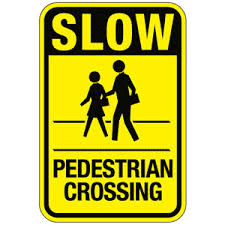
Washington’s crosswalk law is pretty simple – stop for pedestrians in the crosswalk. But most people are unaware that every intersection contains a crosswalk whether marked or unmarked. Drivers are required to stop for pedestrians when crossing the street at marked crosswalks and at intersections as well. That’s right it’s perfectly legal to cross the street at an intersection even without the aid of crosswalk striping on the pavement. It’s critically important that everyone understand this basic rule of the road to keep pedestrians – including students, seniors, and transit riders – safe. Let’s take a look at a few examples of legal crossings.

The law around standard crosswalks like the one pictured above is relatively straightforward. When a pedestrian is waiting at the curb to cross the street, drivers are required to stop. SDOT installs this type of crossing on lower volume streets with no more than three lanes of traffic and many of these are designated school crossings. These crossings are ‘uncontrolled’, meaning that there are no stop signs or traffic signals to assign right-of-way so we’re counting on drivers and pedestrians to know and follow the law.

As mentioned earlier, all intersections contain legal crossings whether marked or unmarked so the intersection pictured above has four legal crossings. If a pedestrians were waiting to cross the street at this location, drivers would be required to stop and let them cross safely.
At traffic signals, state law says, drivers can turn into the crosswalk only after pedestrians are one lane past the drivers half of the roadway. The image below should help clarify this law. Just remember that pedestrians and bicyclists have the right-of-way at crosswalks and intersections. Give them plenty of time to cross the street.
 Here are a few other tips to help keep pedestrians safe
Here are a few other tips to help keep pedestrians safe
- Don’t block the view. It’s illegal to park with 20 feet of a marked or unmarked crosswalk and within 30 feet of a traffic signal, stop sign, or yield sign. Parking too close to a crosswalk or traffic control device limits the visibility of the device and pedestrians – especially shorter children or people using wheelchairs.
- Slow down. Speed increases the amount of time it takes to recognize pedestrians and bring your vehicle to a stop. Follow the speed limit and watch out for pedestrians.
- Sidewalks and Driveways. Stop for pedestrians whenever you’re driving across a sidewalk to access a parking lot, driveway or alley.
Pedestrians are much more vulnerable to injuries in collisions and the likelihood of injury is nearly 100 percent should an incident occur. Let’s work together to make sure that doesn’t happen. When you’re out on the streets, look out for others and stop for pedestrians.
